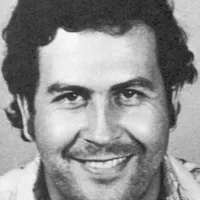How education and upbringing influenced the life of Adolf Hitler's rise to power. A timeline of key moments.
Adolf Hitler's ascent to power began in 1919 when he joined the German Workers' Party, which he transformed into the Nazi Party and became its leader in 1921. Exploiting the Weimar Republic's instability, Hitler gained popularity through propaganda and promises of national restoration. While initially espousing some anti-capitalist ideas, he later purged those elements to gain support from industrialists. Key to consolidating his authority were ruthless tactics, including the Night of the Long Knives, which eliminated internal opposition and solidified his control over the Nazi Party.
August 1914: Hitler Enlists in Bavarian Regiment
In August 1914, Adolf Hitler, an Austrian-born 25-year-old, enlisted in a Bavarian regiment of the German Army after receiving permission from King Ludwig III of Bavaria, despite not yet being a German citizen.
January 1919: Hitler Serves as Guard at POW Camp
In January 1919, Adolf Hitler was reassigned to a prisoner-of-war camp in Traunstein as a guard, remaining there until the camp dissolved.
January 1919: Formation of the German Workers' Party
On January 5, 1919, the German Workers' Party (DAP) was formed by Anton Drexler, Karl Harrer, and others through the amalgamation of other groups.
February 1919: Assassination of Kurt Eisner
On February 21, 1919, socialist Kurt Eisner was assassinated by a German nationalist. His rival Erhard Auer was also wounded in an attack.
April 1919: Hitler Elected as Liaison
In April 1919, Hitler was elected as the liaison of his military battalion on April 3 and again on April 15, urging his unit to stay out of the fighting.
May 1919: Bavarian Soviet Republic Crushed
On May 6, 1919, the Bavarian Soviet Republic was officially crushed, and in the aftermath, Hitler denounced a fellow liaison as a Soviet "radical rabble-rouser."
September 1919: Hitler Disputes Secession Advocate
During the 12 September 1919 meeting, Hitler vehemently opposed an audience member advocating for Bavaria's secession from Germany and uniting with Austria.
October 1924: Public declaration of citizenship
In October 1924, as his citizenship became a topic of public debate, Hitler had a public declaration printed.
April 1925: Renunciation of Austrian citizenship
On April 7, 1925, under the threat of deportation to Austria, Hitler formally renounced his Austrian citizenship. He would not acquire German citizenship until almost seven years later, preventing him from running for public office.
1931: Rising SA Deaths
By the end of 1931, the SA had suffered 47 deaths and the Rotfront recorded losses of approximately 80 killed.
April 1932: Banning of Nazi Party Paramilitaries
On April 13, 1932, following the presidential elections, the German government banned the Nazi Party paramilitaries, the SA and the SS, on the basis of the Emergency Decree for the Preservation of State Authority. This ban was later lifted on June 16 by Franz von Papen.
April 1932: Presidential Election Loss and Street Fights
Throughout February and April 1932, street fights and beer hall battles resulted in deaths amidst Adolf Hitler's presidential election competition against Hindenburg. On April 10, 1932, Hitler lost the election to Paul von Hindenburg.
February 1933: Shifting Opinions on Hitler
On February 22, 1933, Sir Horace Rumbold, the British Ambassador in Berlin, recognized Hitler as a clever demagogue. Robert Vansittart, from the Foreign Office, then concluded that Hitler's gaining power would lead to another European war.
1933: Conviction and Release of SA Men
In 1933, five SA men were convicted and sentenced to death for the murder of a KPD member in Potempa. The sentences were commuted to life imprisonment, but they were freed after just over four months following a 1933 amnesty by Hitler.
1934: Papen's Role and Subsequent Departure
In 1934, Papen served as Vice-Chancellor, initially speaking out against Nazi excesses. However, after narrowly escaping death in the Night of the Long Knives, he ceased criticism and was sent to Vienna as German ambassador.
Mentioned in this timeline
Germany officially the Federal Republic of Germany is a Western...

Books are a means of storing information as text or...

War is defined as an armed conflict involving the organized...

Fire is a rapid oxidation process called combustion releasing heat...

Moscow is the capital and largest city of Russia located...

A funeral is a ceremony for the final disposition of...
Trending

2 months ago Virginia Vallejo, Pablo Escobar's ex, reveals health struggle: Suffered a brutal stroke.

7 months ago Jake Gyllenhaal's 'Othello' Snubbed by Tony Awards Despite Box Office Success with Denzel Washington.
8 days ago World Cup 2026 Draw: Brazil in Group C, France's Path

Maisie Williams is an English actress who gained widespread recognition for her role as Arya Stark in the HBO series...

2 months ago Dakota Johnson's Epic Response to 'Naked Dress' Queries and Red Carpet Fashion
21 days ago SpaceX Falcon 9 Launches Starlink Satellites from Cape Canaveral on 150th Mission.
Popular

Candace Owens is an American conservative political commentator and author...

Ilhan Omar is an American politician currently serving as the...

XXXTentacion born Jahseh Dwayne Ricardo Onfroy was a controversial yet...

Tom Cotton is an American politician and Army veteran currently...

Kelsey Grammer is an accomplished American actor producer and singer...
The Kennedy Center Honors are annual awards recognizing individuals and...
